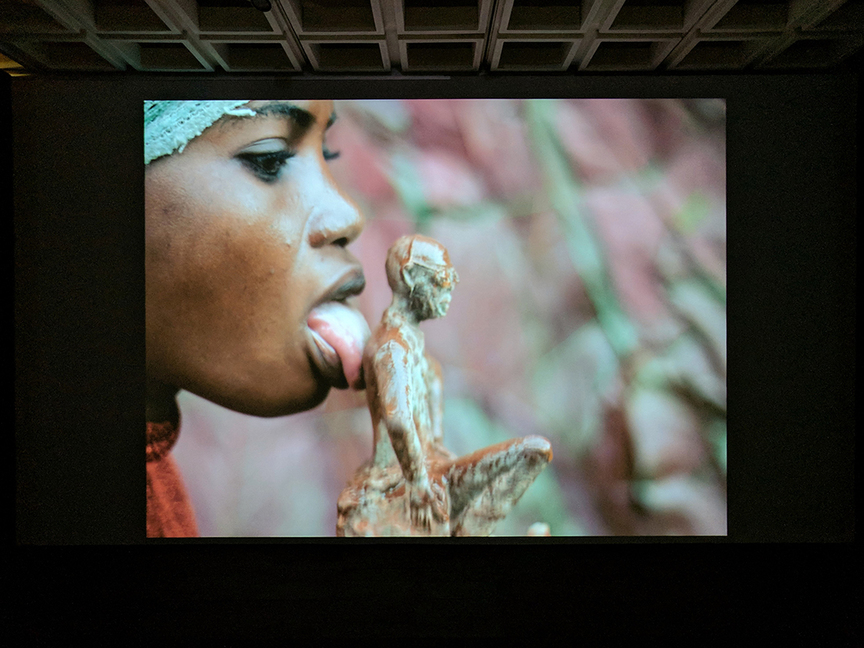
R
E
V N
E
X
T
Finnish artist EIJA-LIISA AHTILA’s Potentiality for Love (2018), displayed at the Art Gallery of New South Wales, was an expansive moving-image work, screened over 22 superimposed LED modules that showed a female figure floating through the milkyway. All photos by Michael Young for ArtAsiaPacific.
This year’s Biennale of Sydney (BoS) brought no shortage of anticipation, not only because 2018 marked the event’s 21st birthday, but also because this edition was the first in the biennale’s 45-year history to be helmed by an Asian artistic director, Mami Kataoka, chief curator of Tokyo’s Mori Art Museum. Yet, despite the high hopes of the show’s organizers and visitors alike, BoS 2018—titled “Superposition: Equilibrium and Engagement”—was, overall, an underwhelming show.
The headline work by artist and activist Ai Weiwei, Law of the Journey (2017), was created to raise awareness of the ongoing refugee crisis that has seen 65 million people displaced worldwide. The installation, a 70-meter-long lifeboat made of black rubber that is packed with figures of the same material, was transported to Cockatoo Island, a UNESCO world heritage site in the middle of Sydney Harbour, for the show. A work that first premiered in March 2017 at the National Gallery in Prague, it was an obvious choice that capitalized on rather than contributed to a nuanced discussion of the sensationalized topic. Also included was Ai’s Crystal Ball (2017), a two-ton crystal ball nestled on a bed of lift jackets, on display at Artspace. Its conceptual intention to reveal an inverted world was so apparent that it made one cringe and ask, “Is this really the best the biennale can offer?”
Thankfully, beyond Ai’s anchor piece at Cockatoo Island, there were a handful of noteworthy works. Of the seven participating venues, Carriageworks was by far the standout, with its eight installations given space to breathe within the airy halls. On view was French conceptualist Laurent Grasso’s disturbing but captivating video work Untitled (2018), an apocalyptic vision filmed in the Australian outback. Indigenous artist George Tjungurrayi’s breathtakingly beautiful paintings with linear patterns based on Indigenous Dreamtime stories were also featured. Cockatoo Island, once the star attraction of recent biennales, seems dejected and forlorn compared with the showstoppers at Carriageworks this year.
Nearby, the Art Gallery of New South Wales offered a considered presentation, including Flemish visual artist Lili Dujourie’s minimalist American Imperialism (1972), a large, rusty, steel sheet leaning against a vivid red wall, and although shoe-horned into an uncomfortable space at the Museum of Contemporary Art, Australian interdisciplinary artist Brook Andrew’s What’s Left Behind (2018) is a masterful, expansive, collaborative installation, comprising archival objects, which effectively interrogate Western colonial narratives.
Here are some of the highlights from BoS 2018.
Michael Young is a contributing editor of ArtAsiaPacific.
The Biennale of Sydney 2018 is on view at various locations throughout Sydney until June 11, 2018.
To read more of ArtAsiaPacific’s articles, visit our Digital Library.




